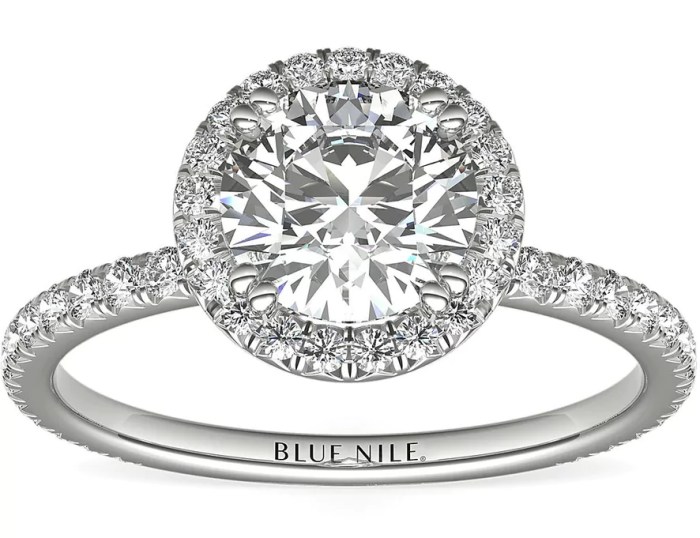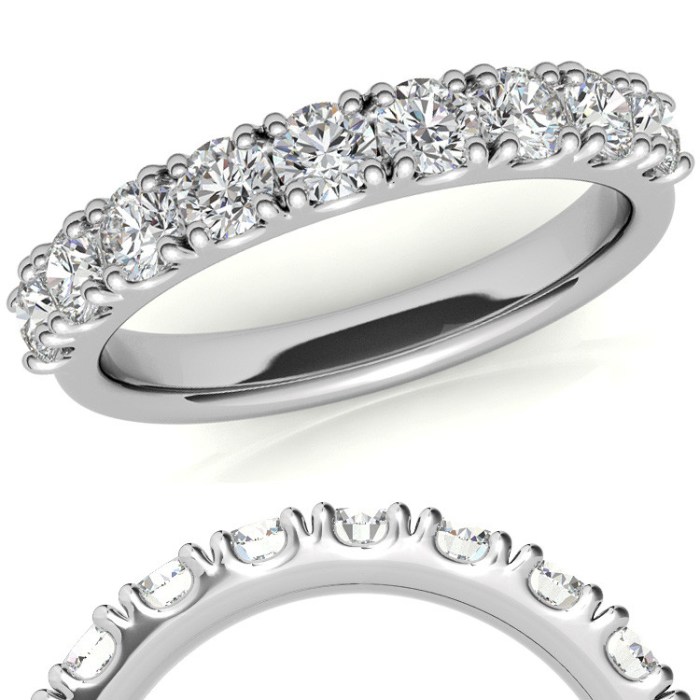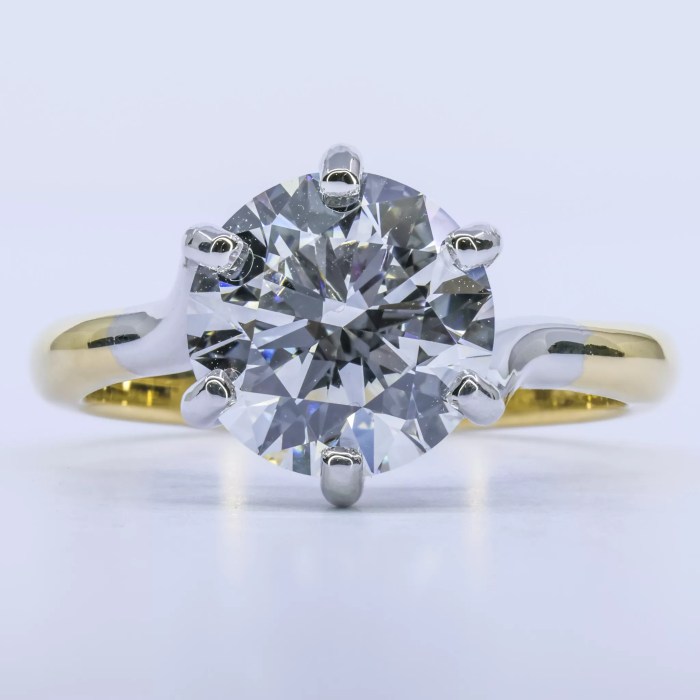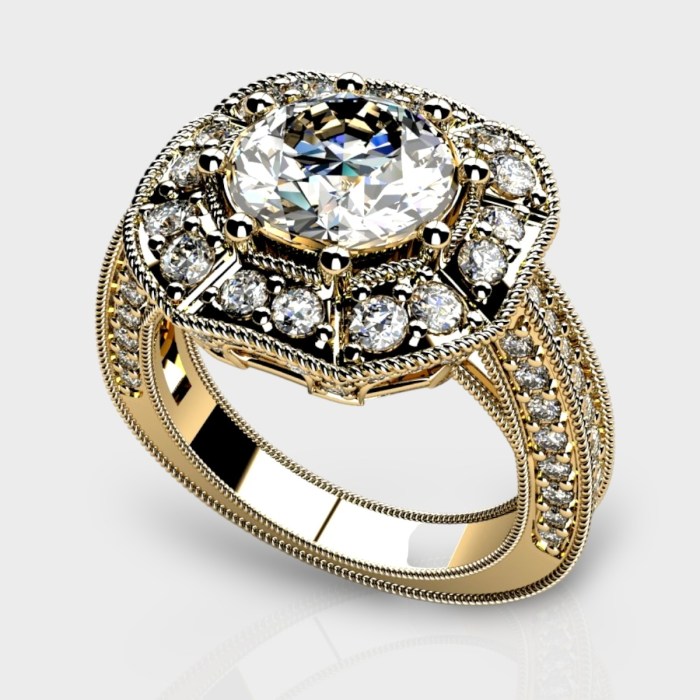best lab grown diamond ring sets the stage for this enthralling narrative, offering readers a glimpse into a story that is rich in detail and brimming with originality from the outset. As more couples and individuals seek beautiful yet ethical alternatives to traditional mined diamonds, lab grown diamond rings have emerged as a stunning option that combines elegance with responsibility.
This guide will delve into the intricacies of these diamonds, helping you understand their creation, selection, and care while highlighting the latest trends in ring designs.
Understanding Lab Grown Diamonds

Source: easemybrain.com
If you’re on the hunt for the perfect symbol of love, exploring diamond wedding rings houston is a great place to start. Houston offers a wide range of exquisite designs that can fit any style, from classic to modern. Finding the right ring not only signifies your commitment but also reflects your unique personality as a couple.
Lab grown diamonds, also known as synthetic diamonds, are created in controlled environments using advanced technological processes that mimic the natural formation of diamonds deep within the Earth. Unlike their natural counterparts, which take millions of years to form under extreme pressure and heat, lab grown diamonds can be produced in a matter of weeks. This innovation has made them a popular choice among consumers who seek ethical and sustainable options in the jewelry market.The process of creating lab grown diamonds generally involves two main methods: High Pressure High Temperature (HPHT) and Chemical Vapor Deposition (CVD).
Both techniques result in diamonds that are chemically, physically, and optically identical to mined diamonds. In the HPHT method, carbon is subjected to high pressure and temperature, emulating the natural diamond formation process. Conversely, the CVD method involves using carbon gas to gradually build up diamond layers on a substrate, resulting in high-quality diamonds. This meticulous process ensures that lab grown diamonds maintain the same brilliant qualities that one would expect from mined diamonds.
Benefits of Lab Grown Diamonds
Choosing lab grown diamonds presents numerous advantages that appeal to modern consumers. Here are some notable benefits:
- Ethical Sourcing: Lab grown diamonds are produced without the ethical concerns associated with diamond mining, including human rights abuses and exploitative labor practices.
- Cost-Effectiveness: Generally, lab grown diamonds are 20-40% less expensive than natural diamonds of comparable size and quality, allowing for more budget-friendly options.
- Quality Control: With precise laboratory conditions, lab grown diamonds can achieve higher clarity and color grades compared to mined diamonds, giving consumers more options for excellence.
- Traceability: Lab grown diamonds come with a guarantee regarding their origin, providing consumers with greater transparency regarding their purchase.
Environmental Impact Comparison
The environmental consequences of diamond mining have been widely documented, including deforestation, habitat destruction, and significant water usage. In contrast, lab grown diamonds offer a much lighter ecological footprint. The following points highlight the differences in environmental impact:
- Reduced Land Disruption: Mining activities often lead to extensive land degradation and ecosystem disruption, whereas lab grown diamonds require minimal land use.
- Lower Carbon Footprint: Lab grown diamond production emits significantly less greenhouse gas compared to traditional mining, which involves heavy machinery and extensive transportation.
- Water Conservation: The water use in diamond mining is substantial, impacting local water sources. Lab grown diamond production uses considerably less water, thus preserving local ecosystems.
“Choosing lab grown diamonds not only supports ethical practices but also contributes to a sustainable future.”
Selecting the Best Lab Grown Diamond Ring

Source: mjedge.net
Choosing a lab grown diamond ring involves more than just picking a shiny stone. It’s about understanding key factors that will influence both the beauty and value of the ring you select. Factors such as cut, color, clarity, and carat weight play significant roles in determining the overall appeal and brilliance of the diamond. Additionally, the right setting can enhance these attributes, making your choice even more special.When it comes to selecting a lab grown diamond, it’s essential to consider the Four Cs: cut, color, clarity, and carat weight.
Each of these qualities contributes to the diamond’s overall appearance and value.
Understanding the Four Cs
The Four Cs are a standard for assessing diamonds, including lab grown varieties. Here’s a breakdown of each factor:
- Cut: The cut of a diamond determines how well it reflects light. A well-cut diamond will exhibit brilliance and sparkle, while a poorly cut diamond may appear dull. Prioritize proportions, symmetry, and polish when evaluating cut quality.
- Color: Lab grown diamonds are available in a range of colors, typically classified from D (colorless) to Z (light yellow or brown). For maximum brilliance, aim for diamonds in the D-H range, which offer a near-colorless appearance.
- Clarity: Clarity refers to the presence of internal or external flaws, known as inclusions and blemishes. Diamonds are graded from Flawless (no inclusions visible under 10x magnification) to Included (inclusions visible to the naked eye). A clarity grade of VS1 or VS2 is usually a good balance of quality and value.
- Carat Weight: Carat weight measures the size of the diamond. While larger diamonds are generally more desirable, two diamonds of equal carat weight can differ significantly in value based on their cut, color, and clarity.
Each of these factors plays a vital role not only in the gemstone’s aesthetics but also in its value. It’s important to prioritize based on personal preferences and budget.
Choosing the Right Ring Setting
The setting of a lab grown diamond ring is equally important as it can enhance the diamond’s appearance and overall style. Different settings can complement various diamond shapes and sizes, influencing how light interacts with the gem.
- Prong Setting: This classic setting features metal prongs that hold the diamond securely while allowing maximum light exposure. It enhances the stone’s brilliance and is especially suited for round diamonds.
- Halo Setting: A halo setting encircles the center diamond with smaller diamonds, creating the illusion of a larger stone. This setting is perfect for those who want extra sparkle and a dramatic look.
- Bezel Setting: A bezel setting encases the diamond in metal, providing more security and a modern aesthetic. It’s great for active lifestyles as it protects the diamond from damage.
- Channel Setting: This design features diamonds set in a channel between the band, creating a sleek and contemporary appearance. It’s often used for wedding bands and can beautifully complement an engagement ring.
The choice of setting should reflect personal style and lifestyle needs, ensuring that the ring not only looks beautiful but also is practical for everyday wear.
Evaluating the Quality of Lab Grown Diamonds
When assessing the quality of lab grown diamonds, it’s essential to familiarize yourself with certification standards. Look for diamonds that come with a grading report from reputable organizations like the Gemological Institute of America (GIA) or the International Gemological Institute (IGI). These reports provide detailed information on the diamond’s Four Cs and confirm its authenticity as a lab grown stone.Additionally, examining the diamond under various lighting conditions can help reveal its true brilliance and fire.
Always ensure you’re purchasing from a trusted jeweler who specializes in lab grown diamonds to guarantee quality and ethical sourcing.
“A diamond is not just a piece of jewelry; it’s a symbol of love, commitment, and individuality.”
Popular Styles and Trends in Lab Grown Diamond Rings

Source: labgrown.com
Lab grown diamond rings have seen a surge in popularity, attributed to their ethical sourcing and stunning aesthetics. As more couples seek unique expressions of their love, lab grown diamonds present an appealing alternative to traditional mined diamonds. The designs of these rings reflect both timeless elegance and modern sophistication, catering to a wide range of personal tastes and occasions.One current trend in lab grown diamond rings is the blend of vintage styles with contemporary aesthetics.
Many consumers are drawn to designs that evoke the charm of bygone eras while incorporating modern techniques and materials. This fusion allows for a distinctive look that stands out.
Current Trends in Ring Designs, Best lab grown diamond ring
The landscape of lab grown diamond ring designs is ever-evolving, with various styles gaining traction. Here are a few notable trends that reflect current preferences:
- Vintage-Inspired Settings: Rings that feature intricate filigree work, milgrain edges, and ornate designs reminiscent of the Art Deco or Victorian eras are particularly popular. These styles evoke a sense of nostalgia and craftsmanship.
- Minimalist Designs: Clean lines and simple settings have become a favorite for many, emphasizing the beauty of the lab grown diamond itself. This trend resonates with couples seeking a modern, understated elegance.
- Mixed Metals: The combination of different metals, such as rose gold, white gold, and yellow gold, allows for unique contrasts and personalization. This trend enhances the visual appeal and allows wearers to showcase their individuality.
- Unique Shapes and Cuts: Fancy shapes like oval, pear, and cushion cuts are increasingly sought after, providing alternatives to the classic round brilliant cut. These unique shapes contribute to a more personalized look.
The customization options for lab grown diamond rings have also become a significant aspect of their appeal. Many jewelers now offer a variety of choices that allow couples to create a ring that perfectly embodies their story and style.
Significance of Customization Options
Customization not only enhances the personal connection couples have with their rings but also allows for the creation of truly one-of-a-kind pieces. Here’s why customization matters:
- Personal Touch: Adding elements like engravings or personalized settings makes the ring uniquely theirs, reflecting their love story.
- Choice of Stone: Couples can select the shape, size, and quality of the lab grown diamond, ensuring that the ring meets their specific desires and budget.
- Design Flexibility: Many jewelers offer design consultations to help couples visualize their perfect ring, leading to a final product that’s a true reflection of their individual style.
Lab grown diamonds are not just a modern trend; they have gained remarkable popularity across various cultures and occasions. Their versatility allows them to fit seamlessly into different traditions and celebrations.
Popularity Across Cultures and Occasions
Lab grown diamonds have transcended geographical and cultural boundaries, becoming a preferred choice for many. Here’s how they’ve made their mark:
- Engagement Rings: Many couples worldwide are embracing lab grown diamonds for their engagement rings, valuing the ethical implications and stunning beauty.
- Anniversary Celebrations: As couples celebrate milestones, lab grown diamond rings serve as meaningful gifts that symbolize their enduring love and commitment.
- Fashion Statements: Beyond romantic occasions, lab grown diamonds are gaining popularity in fashion jewelry, with many opting for statement pieces that showcase their unique designs and sustainable origins.
The rise of lab grown diamonds is reshaping the jewelry industry, making ethical choices fashionable and accessible while promoting individuality through diverse styles and customization options.
Caring for Lab Grown Diamond Rings

Source: com.au
Lab grown diamond rings are not only stunning but also require proper care to maintain their beauty and brilliance. Just like their natural counterparts, these diamonds can accumulate dirt and oils from everyday wear, making regular cleaning and careful storage essential. Here, we will provide detailed guidance on how to keep your lab grown diamond ring looking as radiant as the day you first wore it.
If you’re searching for the perfect symbol of love, exploring diamond wedding rings houston can be a great start. Houston offers a variety of stunning designs that can fit any style, whether you’re looking for something classic or contemporary. With so many options available, you’ll find a ring that beautifully represents your unique bond.
Cleaning Lab Grown Diamond Rings
Regular cleaning is crucial to preserving the sparkling appearance of your lab grown diamond ring. Here are some effective methods for cleaning your ring at home:
- Soapy Water: Mix a few drops of mild dish soap with warm water. Soak your ring for about 20-30 minutes, then gently scrub it with a soft toothbrush, paying special attention to the underside of the stone.
- Ultrasonic Cleaners: These devices use high-frequency sound waves to clean jewelry. If you choose to use one, make sure it is safe for lab grown diamonds, as some stones may be sensitive to ultrasonic cleaning.
- Professional Cleaning: Consider taking your ring to a professional jeweler for a thorough cleaning and inspection every six months to a year.
Storing Lab Grown Diamond Rings
Proper storage is essential to prevent scratches and maintain the brilliance of your lab grown diamond ring. Consider these tips for effective storage:
- Individual Pouches: Store your ring in a separate fabric pouch or its original box to avoid contact with other jewelry, which can cause scratches.
- Cool, Dry Place: Keep your ring in a cool, dry location, away from direct sunlight and humidity, to prevent any potential damage.
- Jewelry Box with Soft Linings: If using a jewelry box, ensure it has soft linings to provide cushioning and protection from scratches.
Misconceptions About Durability and Maintenance
Many people hold misconceptions regarding the durability of lab grown diamonds. While it’s true that they are exceptionally durable, similar to natural diamonds, some believe they require less maintenance due to their synthetic origin. Here are key points to clarify:
“Lab grown diamonds have the same hardness and durability as natural diamonds, rated 10 on the Mohs scale, making them resistant to scratches and everyday wear.”
This means that with proper care, lab grown diamonds can last a lifetime. Regular cleaning and mindful storage are recommended, just as they would be for any fine jewelry. Additionally, some may mistakenly believe that lab grown diamonds are less valuable; however, their beauty and quality can be just as impressive as that of natural diamonds, depending on the cut, clarity, and color.By following these care and maintenance tips, your lab grown diamond ring will retain its stunning appearance for years to come, allowing you to enjoy its beauty with every wear.
Final Thoughts

Source: mudrika.com
In summary, choosing the best lab grown diamond ring not only reflects your personal style but also aligns with environmentally conscious practices. With a variety of styles, customization options, and care tips at your disposal, you can make an informed choice that dazzles while making a positive impact. Whether it’s for an engagement, anniversary, or just because, lab grown diamonds are a beautiful testament to love and sustainability.
General Inquiries
What are lab grown diamonds made from?
Lab grown diamonds are created using advanced technology that replicates the natural process of diamond formation, primarily through High Pressure High Temperature (HPHT) or Chemical Vapor Deposition (CVD) methods.
Are lab grown diamonds less expensive than mined diamonds?
Yes, lab grown diamonds typically cost 20-40% less than their mined counterparts, making them a more affordable option for consumers.
Do lab grown diamonds have the same quality as mined diamonds?
Yes, lab grown diamonds can have the same physical, chemical, and optical properties as mined diamonds, often graded by the same standards of cut, color, clarity, and carat weight.
How do I clean my lab grown diamond ring?
You can clean your lab grown diamond ring using mild soap and warm water, a soft brush, and a lint-free cloth to maintain its brilliance.
Are lab grown diamonds considered real diamonds?
Yes, lab grown diamonds are real diamonds; they are identical to natural diamonds in composition and appearance, distinguished mainly by their origin.